

You're reading The Audiencers' newsletter #34, sent out on March 20th, 2023. To receive future newsletters straight to your inbox every two weeks, sign up here.
Thank you New York, and goodnight! (*drops mic)
Friday felt like a dream, being in The New York Times Building, with so many incredible audience development professionals in one place, hearing about subscription, registration, newsletter and social strategies from some of the best in the business… A day that it’ll take us a while to get over!
Articles coming soon, but first, on to our Toronto Festival!
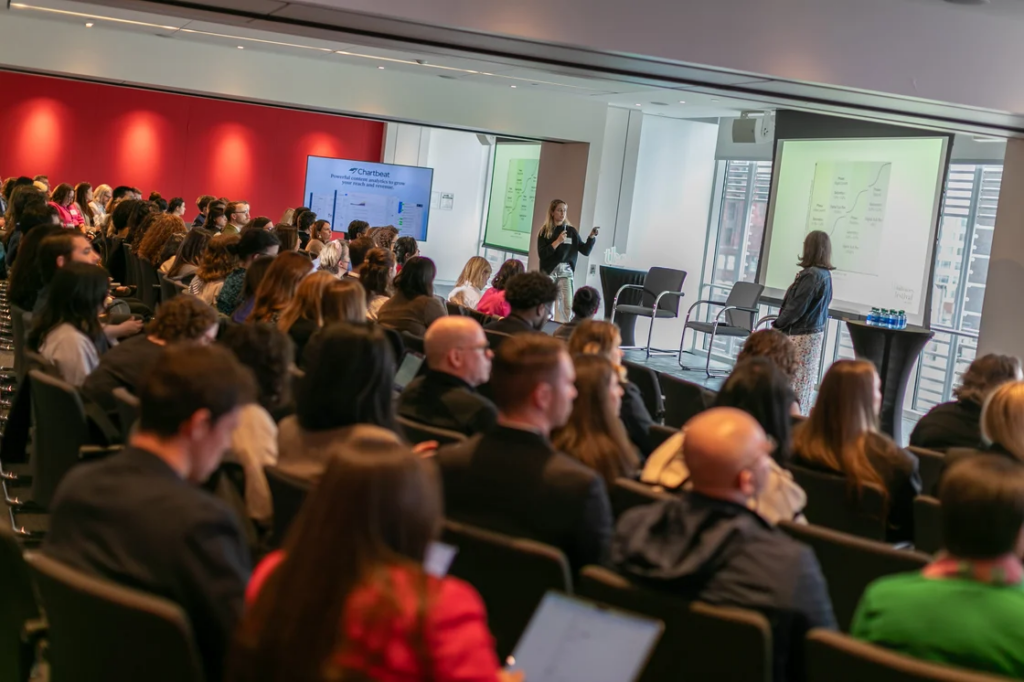
In today’s newsletter:
- Don’t feel like subscribing? 12 examples of alternatives to subscription to increase ARPU
- Writing for the paywall: the hourglass framework
- BTS of Bloomberg’s registration model: first takeaways from The Audiencers’ Festival New York
- Content to add to your reading list
Don’t feel like subscribing? Here’s 12 alternatives
I’m guessing that you’re a fan of subscriptions, otherwise you’re in the wrong place. But, unfortunately, not all of readers are as enthusiastic about this model. Some are frustrated by all the paywalls and want alternatives. And this supports publisher goals of diversified revenue streams and increased ARPU anyway. So what are others on the market doing already?
Lennart has brought together 12 (+1) examples of alternatives to subs already being used successfully.
Kölner Stadt-Anzeiger: Coins
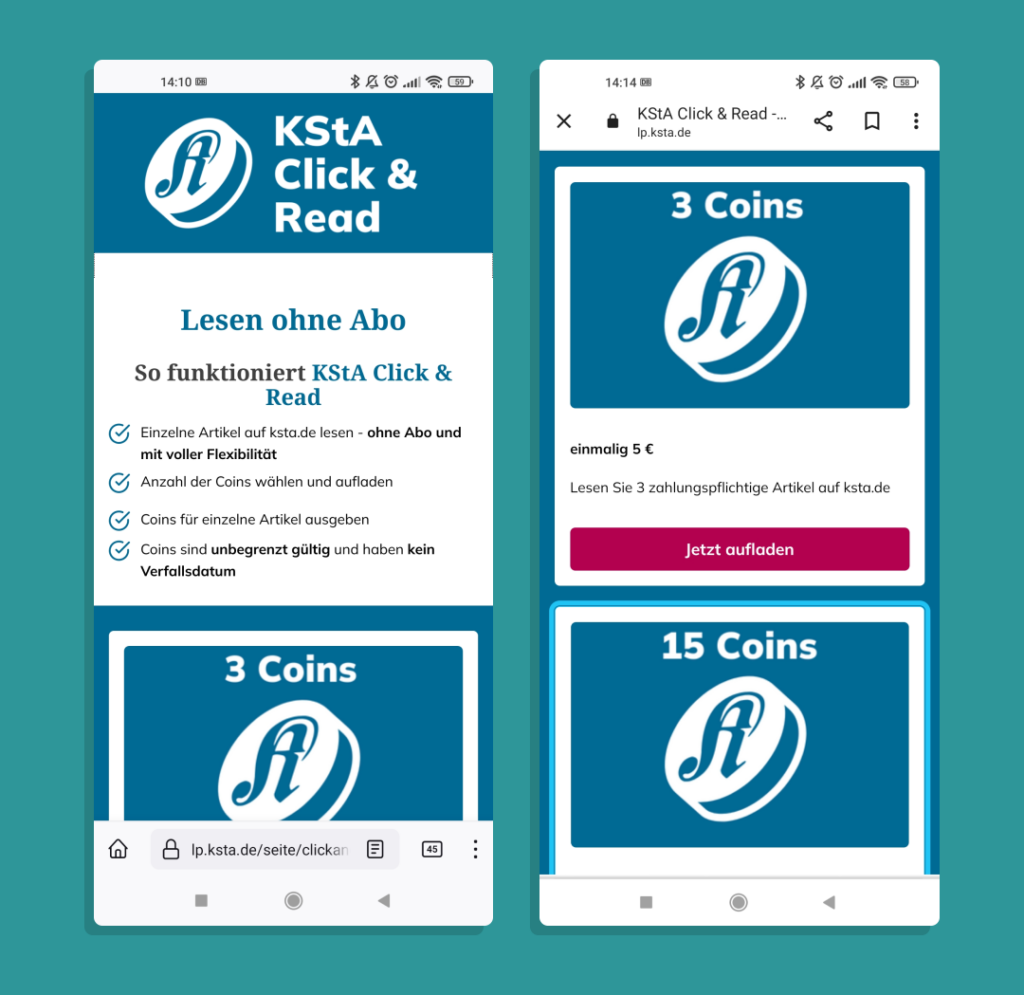
This is probably one of the most ambitious and experimental approaches in recent years. Micropayments often fail because the effort is too great for a few cents per item, which is why KStA allows you to buy several items at once. To do this, you load a wallet with coins and gradually spend them on individual items. Basically like a rechargeable card for buses and trains.
Babbel: Lifetime
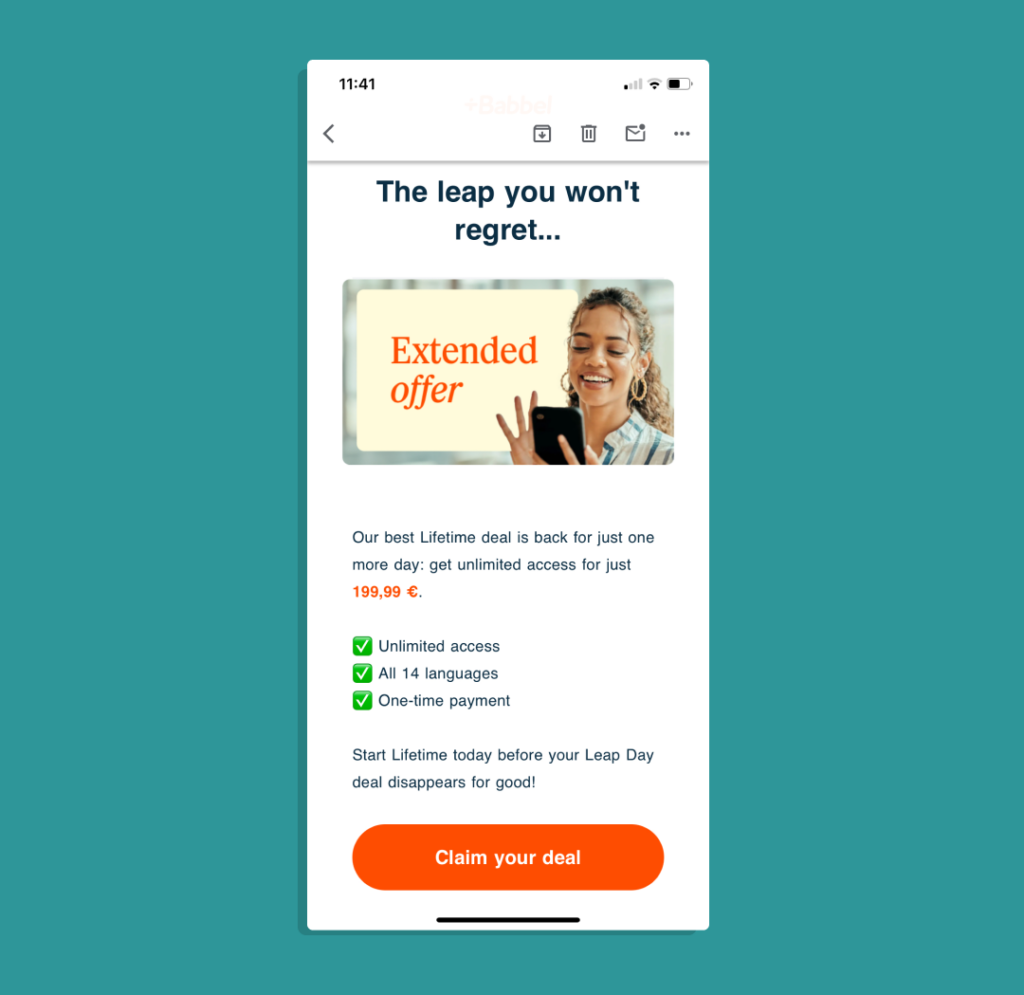
Language learning is a life’s work. And if you’re serious about it, there’s Babbel Lifetime. Compared to the basic subscription (€9.99 per month), the Lifetime package pays for itself after 30 months (with its regular cost, above is a special discount, even better) and, in contrast to the normal packages, you’re not limited to one language, but can continue using the platform for any other languages in the future.
> 10 more examples of publishers testing subscription alternatives on The Audiencers
Writing for the paywall: the hourglass technique
We’re having increasingly more conversations about cultural and operational change within editorial teams to adapt to the digital subscription model. And although for many this transformation is happening on-the-job, the other day I met someone in New York who was one of the first to study a course on digital transformation in the newsroom at university.
Which got me thinking about one of the first articles published on The Audiencers, where consultant Eric Le Braz suggests that the inverted triangle, taught to budding journalists for as long as we can remember, should be revisited.
“Today’s the day that we turn away from the famous inverted pyramid. Times have changed, and the arrival of paywalls means it’s time to turn to editorial narration, replacing the traditional pyramid with… an hourglass. “
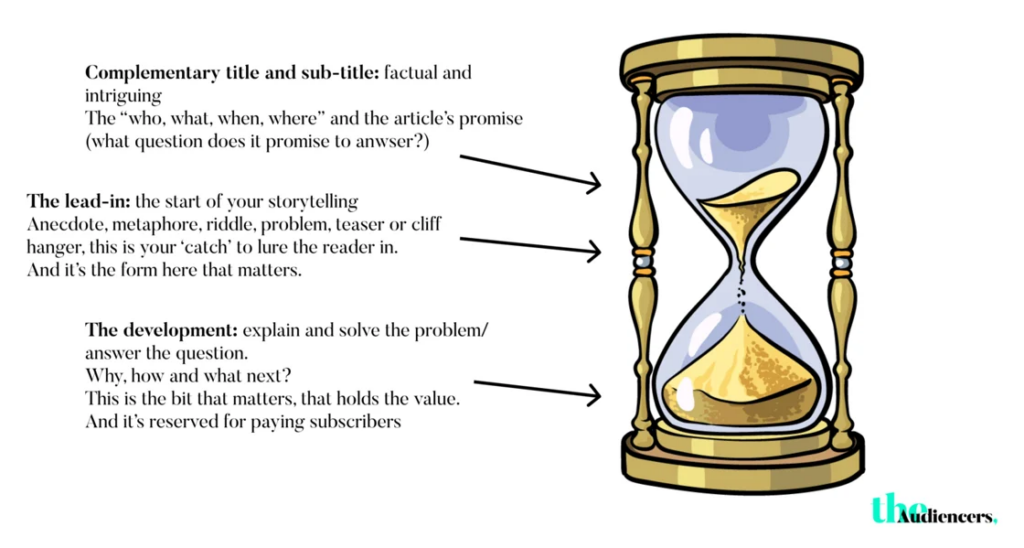
In paywalls as in love, you have to attract without revealing too much of yourself…
In the inverted pyramid format, a reader will have already had their question answered before the paywall.
But in an hourglass, the publisher only specifies the angle from the title, often in the form of a question, but never provides readers with the answer before the paywall. They’ll outline the who, what, where and when whilst reserving the main answers to the premium part of the content – why, how, and what next?
“The hourglass is a creative constraint. I won’t deny it: an hourglass construction requires more time than an inverted pyramid. But it’s above all a new habit to form for editorial teams, which comes back to the fundamentals of journalism – journalists must make people want to read without sharing everything. It’s useless to show the whole store just in the window.”
> A conversation-starting article for sure, but certainly one to read (for this very reason)
BTS of Bloomberg’s registration model
Megan Hess, Senior Editor, Digital Subscriptions of Bloomberg.com, joined our registration panel at The Audiencers’ Festival New York, sharing the behind-the-scenes of their registration model, launched in 2022.
Why move into registration (after having launched subs in 2018)?
“By asking for an email address instead of only hitting users with the paywall, we can grow audience by attracting a much bigger pool of potential subscribers. The goal is to form habits with this cohort to help engage them on a regular basis and trickle them down the conversion funnel and retain them.”

What do you do with all these email addresses?
“We developed a 30-day registered user onboarding email series – each email aims to either engage (i.e. Sign up for this newsletter) or convert (i.e. Get this limited-time offer at $1.99/month).”
Users are nudged to sign up for a newsletter, download the app and watch Bloomberg TV. They’re also prompted to complete their free Bloomberg.com profile (job title, industry, etc.), listen to podcasts, and use the Watchlist tool.
“Overall, the email program has driven increases in new subscriptions and lifts in lifetime value per subscriber.”
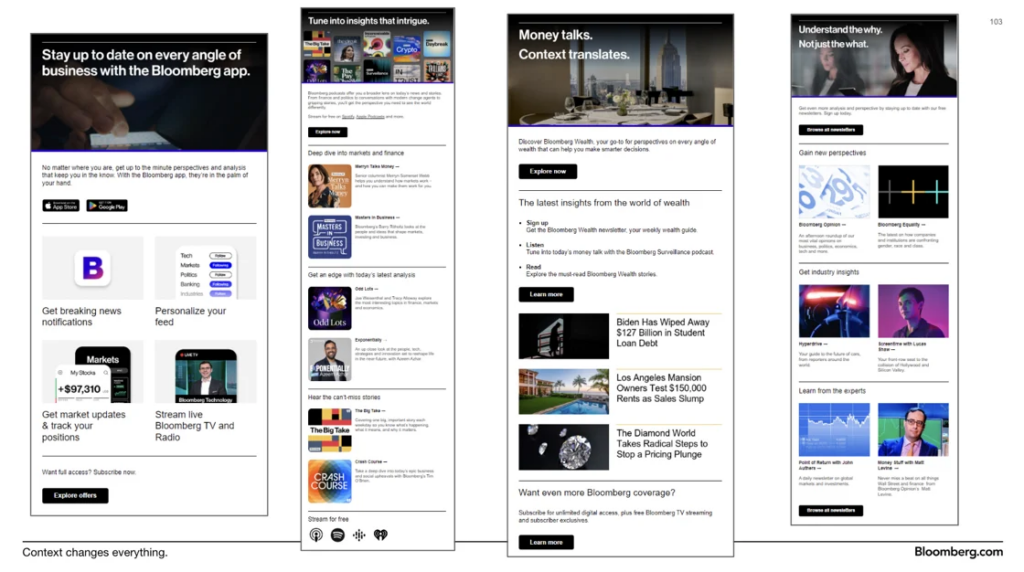
Editorial experimentation
Bloomberg show the reg wall programmatically to most new users, but they’re also using it to experiment on stories with high consumer value that have high capacity to travel far and capture audiences that are likely to come back.
For instance, all Bloomberg Green coverage during COP was behind a reg wall instead of the paywall, as a public service.
“We’re using registration to grow audience and visibility around our global election coverage this year because politics is such a highly commoditized space.”
> More insights from the New York Festival coming soon
Content to add to your reading list:
- Next Gen News report is a must-read
- How registration has become the cornerstone of Réussir group’s subscription strategy
- Advertising, philanthropy, and user engagement: How the non-profit La Presse generated $13 million net assets in 2023
The Audiencers’ newsletter: from professionals to professionals
Sign up to our newsletter – real-life examples, expert points of view and inspirations from publishers around the world to help you do your job better. Sent every two weeks.


